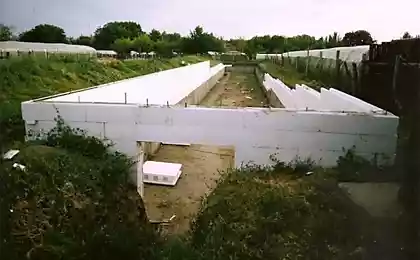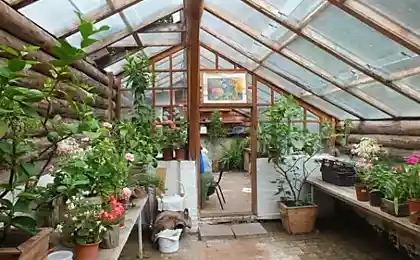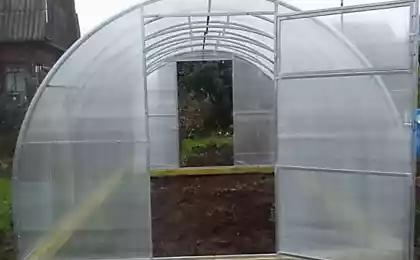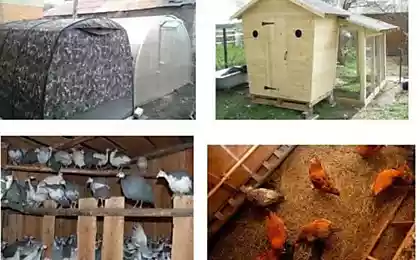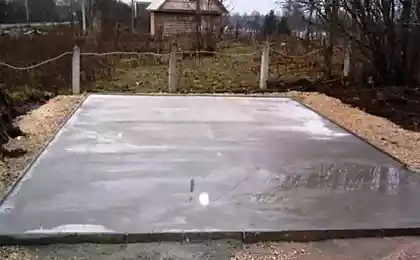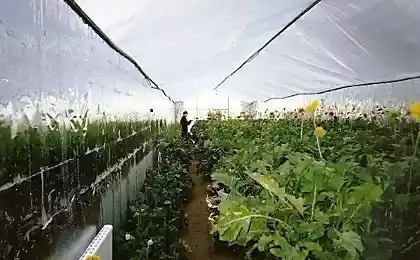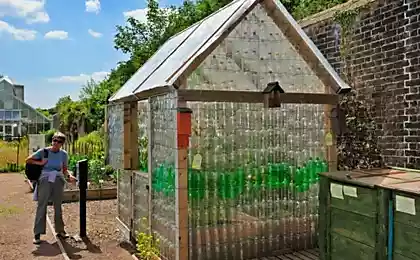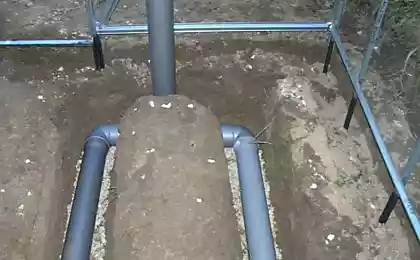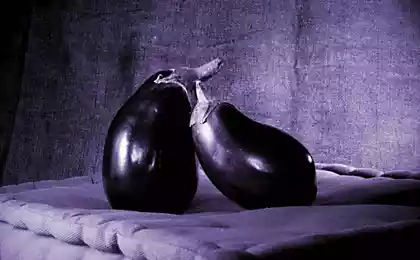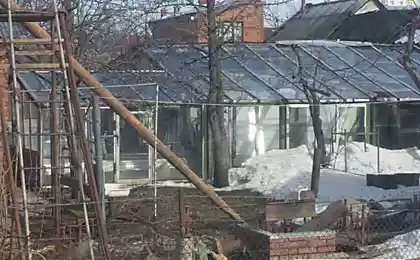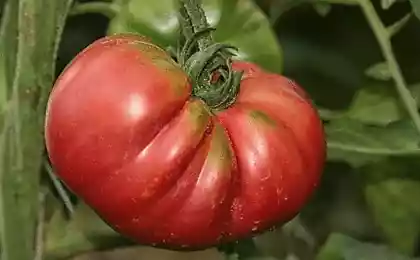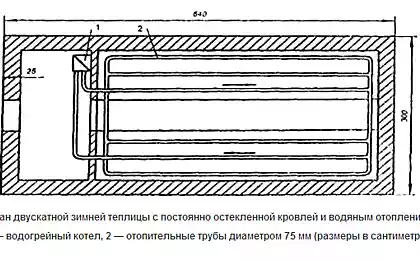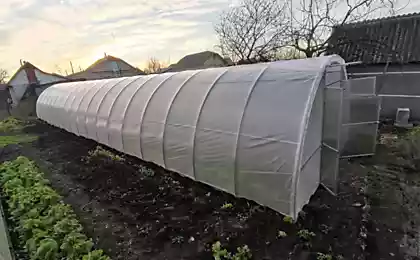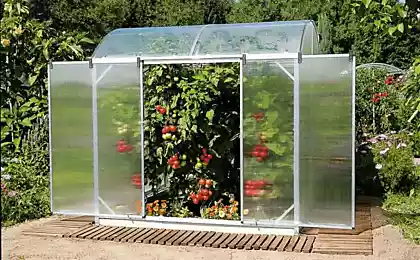141
How to save vegetables from the heat in the greenhouse
It is clear that you want to get a result, regardless of what conditions are around. This generally concerns everything in life, and the garden is a separate topic. You can't tell nature. So we put a greenhouse to balance. In the spring you are so happy with the first shoots, summer comes and you start scratching turnips. Why do leaves wilt in the greenhouse?There are all conditions, right?
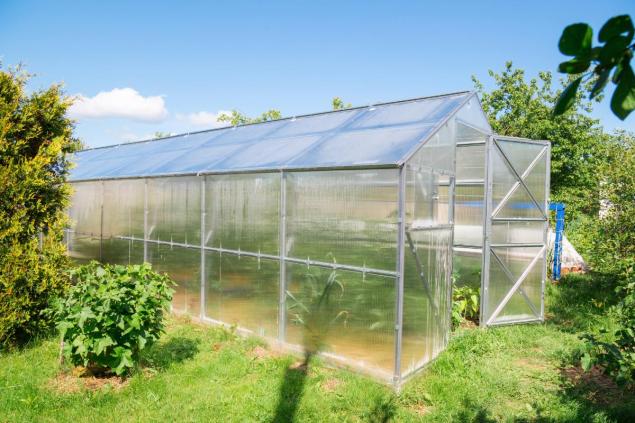
Editorial "Site" He believes that all the blame can be banal overheating. Alas, plants are afraid not only of cold, but also excessive heat. And our stationary polycarbonate greenhouse is quite hot. Let's figure out together what this threatens and how to fix the situation.

Why do the leaves wilt in the greenhouse There is a medal that has two sides. On the obverse, it means a rather temperate climate, cold are tangy, without a greenhouse can not do. And on the reverse we have, you know, an abnormally hot summer, especially in recent years. You won’t remember when the season was fixed. From the cold immediately jump into the tropics.
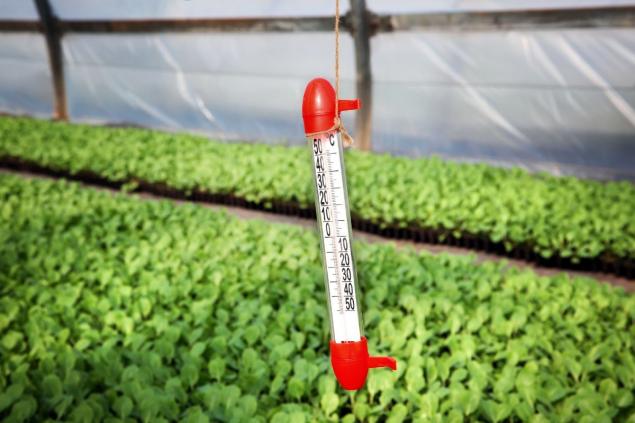
What is the risk of overheating your cucumbers and tomatoes? Photosynthesis slows down, pollen can become sterile, which means that there will be no pollination. No pollination, no harvest. This alone is enough to bring all your efforts to earth. The question becomes the edge - what to do?

What to do when the leaves wilt in the greenhouse For example, use a thermometer. The temperature in the area of thirty is no longer good and here we will help other plants. It's great if you have a sprawling palm tree in your yard, but it's unlikely. Just install the greenhouse so that, say, after lunch it falls into natural shading. However, remember that the sun should hit it for at least four hours a day.
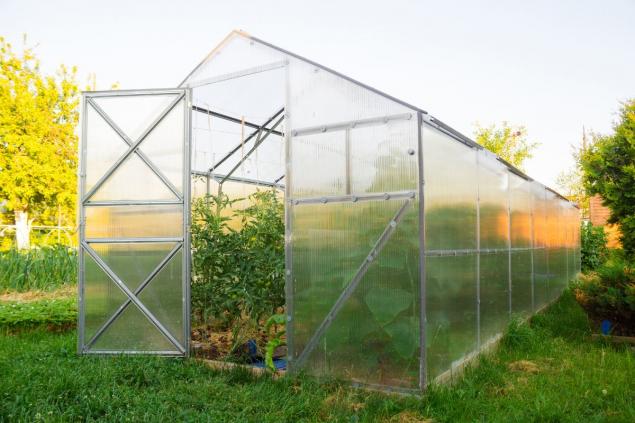
If the greenhouse is large, you can plant some plants inside or even put them in pots. It's like a winter garden. You can use any curly and fast-growing plant that will create a penumbra. Keep in mind that vegetables can conflict, so to avoid you can attach the plant outside.

For those who do not plan to waste their time on all sorts of nonsense with other plants and crave effective ways now. If you don't want to, you'll have to shade the stationary greenhouse. The Culibins offer this option. Dilute chalk or clay in a bucket and smear the upper sections with this solution. The light will remain and the sun will soften. The inconvenience is that the first rain will wash away all this and have to smear again.

If clay or chalk is not an option (paint and lime should not be used), then sketch some branches on the roof of the greenhouse. You can even make fresh hay, at the same time you will dry it. In extreme cases, cover with any bedspread that can be moistened with water. In general, for these purposes, shadow grids are excellent.

The nets are different. Some transmit 25% of the light, others 75%. Foil can be woven into the thread, which improves light reflection. In any case, this thing is more comfortable covering, you can always throw it more, take off and all that. The downside is that you will have to buy it.
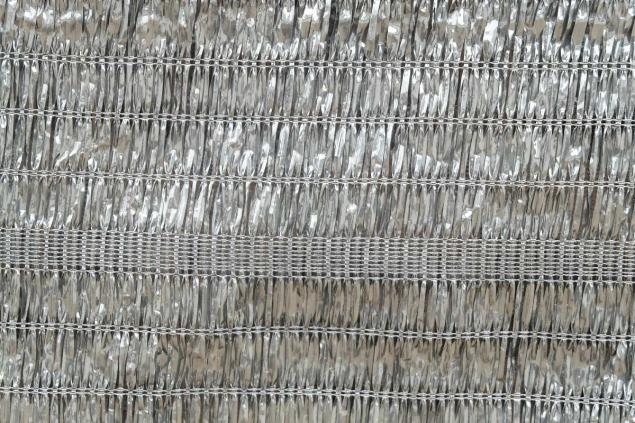
With an ordinary greenhouse there are no problems. I made a hole in the plastic, so there's a draft. In stationary polycarbonate greenhouses, windows may not be provided, so be prepared to "cut through" the window. Carefully cut the piece at the top, then attach it back with door hinges, and paste the edges with tape to close tightly.

It is ideal to attach a fan so that it pumps air predictably, but a few holes instead of windows can play a significant role in the movement of air. Cool water perfectly lowers the temperature, but it must be sprayed with the help of a spray gun. Some just put a container of water in the greenhouse.

It should also be remembered that in conditions of elevated temperature, various microorganisms can develop that can provoke plant diseases. This means that the climate in the greenhouse must be monitored. The soil should also be cooled. Mulching to help and then necessarily watering. You can determine the amount of water on your own, but in the summer you usually need a lot of it.

We wish you a good harvest and never let the question torment you. Why do leaves wilt in the greenhouse?. From us, another useful link that will tell you about gardening wisdom, and you must tell in the comments about what methods you yourself use to cool the greenhouse. We all want to know!

Editorial "Site" He believes that all the blame can be banal overheating. Alas, plants are afraid not only of cold, but also excessive heat. And our stationary polycarbonate greenhouse is quite hot. Let's figure out together what this threatens and how to fix the situation.

Why do the leaves wilt in the greenhouse There is a medal that has two sides. On the obverse, it means a rather temperate climate, cold are tangy, without a greenhouse can not do. And on the reverse we have, you know, an abnormally hot summer, especially in recent years. You won’t remember when the season was fixed. From the cold immediately jump into the tropics.

What is the risk of overheating your cucumbers and tomatoes? Photosynthesis slows down, pollen can become sterile, which means that there will be no pollination. No pollination, no harvest. This alone is enough to bring all your efforts to earth. The question becomes the edge - what to do?

What to do when the leaves wilt in the greenhouse For example, use a thermometer. The temperature in the area of thirty is no longer good and here we will help other plants. It's great if you have a sprawling palm tree in your yard, but it's unlikely. Just install the greenhouse so that, say, after lunch it falls into natural shading. However, remember that the sun should hit it for at least four hours a day.

If the greenhouse is large, you can plant some plants inside or even put them in pots. It's like a winter garden. You can use any curly and fast-growing plant that will create a penumbra. Keep in mind that vegetables can conflict, so to avoid you can attach the plant outside.

For those who do not plan to waste their time on all sorts of nonsense with other plants and crave effective ways now. If you don't want to, you'll have to shade the stationary greenhouse. The Culibins offer this option. Dilute chalk or clay in a bucket and smear the upper sections with this solution. The light will remain and the sun will soften. The inconvenience is that the first rain will wash away all this and have to smear again.

If clay or chalk is not an option (paint and lime should not be used), then sketch some branches on the roof of the greenhouse. You can even make fresh hay, at the same time you will dry it. In extreme cases, cover with any bedspread that can be moistened with water. In general, for these purposes, shadow grids are excellent.

The nets are different. Some transmit 25% of the light, others 75%. Foil can be woven into the thread, which improves light reflection. In any case, this thing is more comfortable covering, you can always throw it more, take off and all that. The downside is that you will have to buy it.

With an ordinary greenhouse there are no problems. I made a hole in the plastic, so there's a draft. In stationary polycarbonate greenhouses, windows may not be provided, so be prepared to "cut through" the window. Carefully cut the piece at the top, then attach it back with door hinges, and paste the edges with tape to close tightly.

It is ideal to attach a fan so that it pumps air predictably, but a few holes instead of windows can play a significant role in the movement of air. Cool water perfectly lowers the temperature, but it must be sprayed with the help of a spray gun. Some just put a container of water in the greenhouse.

It should also be remembered that in conditions of elevated temperature, various microorganisms can develop that can provoke plant diseases. This means that the climate in the greenhouse must be monitored. The soil should also be cooled. Mulching to help and then necessarily watering. You can determine the amount of water on your own, but in the summer you usually need a lot of it.

We wish you a good harvest and never let the question torment you. Why do leaves wilt in the greenhouse?. From us, another useful link that will tell you about gardening wisdom, and you must tell in the comments about what methods you yourself use to cool the greenhouse. We all want to know!
Why is it a pity that we do not make barbecue from eggs?
Why do Italian women leave water bottles at the front door?
